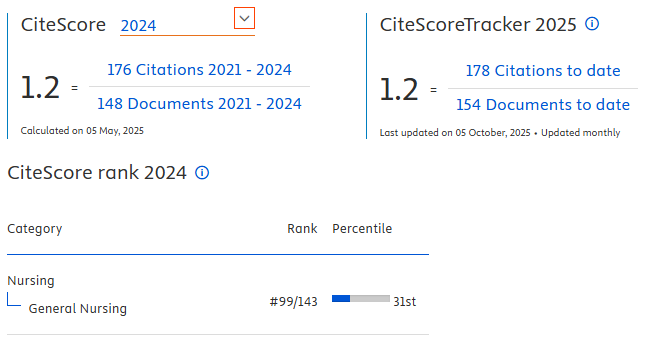Effectiveness of resistance training to improve muscle strength and physical performance of patients with diabetes mellitus: a meta-analysis

Downloads
Additional Files
Introduction: Metabolic disorders in diabetes mellitus (DM) sufferers, caused by insulin resistance, chronic muscle inflammation, and mitochondrial dysfunction, can affect muscle structure and function and reduce physical performance (PP). Thus, rehabilitation in the form of resistance training (RT) is needed to overcome these problems. This study aims to determine the effect of RT on muscle strength (MS; lower and upper limbs) and PP (primary outcome), as well as body mass index (BMI), VO2 peak, lean muscle mass, HbA1c, blood pressure (BP), and adverse events (secondary outcome) in patients with DM.
Methods: Six databases were used in a comprehensive search conducted from March to April 2025 to locate relevant articles. We used Standard Mean Difference (SMD), Mean Difference (MD), and Risk Difference with a 95% Confidence Interval (CI), to determine the effect of RT. We assess the quality of studies using the Joanna Briggs Institution checklist.
Results: 26 articles randomized controlled trial articles were included, showing that RT has a significant effect on improving MS (lower and upper limbs), PP (primary outcome), and VO2 peak, LMM (secondary outcome); Additionally, RT has a significant effect in lowering HbA1c and systolic blood pressure (SBP), but not significantly in reducing diastolic blood pressure (DBP) (secondary outcome) between the intervention group and control group of patients with DM. There were no RT-related adverse events.
Conclusions: RT is a rehabilitation recommendation to improve MS and PP and is also a rehabilitative effort for those living with DM.
Acosta-Manzano, P., et al. (2020). Beyond general resistance training. Hypertrophy versus muscular endurance training as therapeutic interventions in adults with type 2 diabetes mellitus: A systematic review and meta-analysis. Obes Rev, 21.6, e13007.doi: 10.1111/obr.13007
Asghari, E., et al. (2020). Synergism Effects of Ursolic Acid Supplementation on the Levels of Irisin, C-reactive Protein, IL-6, and TNF-alpha During High-intensity Resistance Training in Low Activity Men. Cardiovasc Hematol Disord Drug Targets, 20.2, 138–144.doi: 10.2174/1871529X19666190918144727
Bacchi, E., et al. (2012). Metabolic effects of aerobic training and resistance training in type 2 diabetic subjects: a randomized controlled trial (the RAED2 study). Diabetes Care, 35.4, 676–82.doi: 10.2337/dc11-1655
Badaam, K. M. & Zingade, U. S. (2021). The Effect of Traditional Aerobic Exercise and Sprint Interval Training on Insulin Resistance in Men With Prediabetes: A Randomised Controlled Trial. Cureus, 13.12, e20789.doi: 10.7759/cureus.20789
Baker, B. S., et al. (2020). Does Blood Flow Restriction Therapy in Patients Older Than Age 50 Result in Muscle Hypertrophy, Increased Strength, or Greater Physical Function? A Systematic Review. Clin Orthop Relat Res, 478.3, 593–606.doi: 10.1097/CORR.0000000000001090
Bassi, D., et al. (2016). Potential effects on cardiorespiratory and metabolic status after a concurrent strength and endurance training program in diabetes patients—a randomized controlled trial. Sports Medicine-Open, 2. 1–13.doi:
Brooks, N., et al. (2006). Strength training improves muscle quality and insulin sensitivity in Hispanic older adults with type 2 diabetes. Int J Med Sci, 4.1, 19–27.doi: 10.7150/ijms.4.19
Cano-Montoya, J., et al. (2025). Impact of resistance and high-intensity interval training on body composition, physical function, and temporal dynamics of adaptation in older women with impaired cardiometabolic health: a randomized clinical trial. BMC Sports Sci Med Rehabil, 17.1, 78.doi: 10.1186/s13102-025-01119-0
Castaneda, C., et al. (2002). A randomized controlled trial of resistance exercise training to improve glycemic control in older adults with type 2 diabetes. Diabetes Care, 25.12, 2335–41.doi: 10.2337/diacare.25.12.2335
Cauza, E., et al. (2005). The relative benefits of endurance and strength training on the metabolic factors and muscle function of people with type 2 diabetes mellitus. Arch Phys Med Rehabil, 86.8, 1527–33.doi: 10.1016/j.apmr.2005.01.007
Chen, C. N., et al. (2021). Factors associated with relative muscle strength in patients with type 2 diabetes mellitus. Arch Gerontol Geriatr, 95. 104384.doi: 10.1016/j.archger.2021.104384
Chien, Y. H., et al. (2022). Effects of 12-Week Progressive Sandbag Exercise Training on Glycemic Control and Muscle Strength in Patients with Type 2 Diabetes Mellitus Combined with Possible Sarcopenia. Int J Environ Res Public Health, 19.22.doi: 10.3390/ijerph192215009
Cornelissen, V. A. & Smart, N. A. (2013). Exercise training for blood pressure: a systematic review and meta-analysis. J Am Heart Assoc, 2.1, e004473.doi: 10.1161/JAHA.112.004473
Corral-Perez, J., et al. (2024). Multidimensional associations of physical performance, balance, wellness and daily activities with frailty in older adults with coexisting frailty and diabetes. J Clin Nurs.doi: 10.1111/jocn.17336
Costa, J. S. R., et al. (2021). Strength training improves insulin resistance and differently affects mitochondria in skeletal muscle and visceral adipose tissue in high-fat fed mice. Life Sci, 278. 119639.doi: 10.1016/j.lfs.2021.119639
D'souza, D. M., et al. (2013). Diabetic myopathy: impact of diabetes mellitus on skeletal muscle progenitor cells. Frontiers in physiology, 4. 379.doi:
D’hooge, R., et al. (2011). Influence of combined aerobic and resistance training on metabolic control, cardiovascular fitness and quality of life in adolescents with type 1 diabetes: a randomized controlled trial. Clinical rehabilitation, 25.4, 349–359.doi:
De Sousa, E. C., et al. (2017). Resistance training alone reduces systolic and diastolic blood pressure in prehypertensive and hypertensive individuals: meta-analysis. Hypertens Res, 40.11, 927–931.doi: 10.1038/hr.2017.69
Dunstan, D. W., et al. (2002). High-intensity resistance training improves glycemic control in older patients with type 2 diabetes. Diabetes Care, 25.10, 1729–36.doi: 10.2337/diacare.25.10.1729
Dunstan, D. W., et al. (2005). Home-based resistance training is not sufficient to maintain improved glycemic control following supervised training in older individuals with type 2 diabetes. Diabetes care, 28.1, 3–9.doi:
Fan, T., Lin, M. H., & Kim, K. (2023). Intensity differences of resistance training for type 2 diabetic patients: a systematic review and meta-analysis. Healthcare, 11(3), 440. doi.org/10.3390/healthcare11030440
Felix-Soriano, E., et al. (2021). Effects of DHA-Rich n-3 Fatty Acid Supplementation and/or Resistance Training on Body Composition and Cardiometabolic Biomarkers in Overweight and Obese Post-Menopausal Women. Nutrients, 13.7.doi: 10.3390/nu13072465
Hameed, U. A., et al. (2012). Resistance Training Leads to Clinically Meaningful Improvements in Control of Glycemia and Muscular Strength in Untrained Middle-aged Patients with type 2 Diabetes Mellitus. N Am J Med Sci, 4.8, 336–43.doi: 10.4103/1947-2714.99507
Hernández-Ochoa, E. O., et al. (2017). The underlying mechanisms of diabetic myopathy. Journal of diabetes research, 2017. 7485738.doi:
Hsieh, P. L., et al. (2018). Resistance Training Improves Muscle Function and Cardiometabolic Risks But Not Quality of Life in Older People With Type 2 Diabetes Mellitus: A Randomized Controlled Trial. J Geriatr Phys Ther, 41.2, 65–76.doi: 10.1519/JPT.0000000000000107
Ishiguro, H., et al. (2016). In Search of the Ideal Resistance Training Program to Improve Glycemic Control and its Indication for Patients with Type 2 Diabetes Mellitus: A Systematic Review and Meta-Analysis. Sports Med, 46(1), 67-77. doi:10.1007/s40279-015-0379-7
Jamshidpour, B., et al. (2020). The effect of aerobic and resistance exercise training on the health related quality of life, physical function, and muscle strength among hemodialysis patients with Type 2 diabetes. Journal of bodywork and movement therapies, 24.2, 98–103.doi:
Jansson, A. K., et al. (2022). Effect of resistance training on HbA1c in adults with type 2 diabetes mellitus and the moderating effect of changes in muscular strength: a systematic review and meta-analysis. BMJ Open Diabetes Res Care, 10.2.doi: 10.1136/bmjdrc-2021-002595
Jung, C. H., et al. (2024). Low muscle strength rather than low muscle mass is associated with cardiovascular autonomic neuropathy in patients with type 2 diabetes. Sci Rep, 14.1, 23385.doi: 10.1038/s41598-024-74390-9
Kataoka, H., et al. (2018). A Randomized Controlled Trial of Short-term Toe Resistance Training to Improve Toe Pinch Force in Patients with Type 2 Diabetes. Acta Med Okayama, 72.1, 9–15.doi: 10.18926/AMO/55657
Khan, K. S., et al. (2022). Effects of progressive resistance training in individuals with type 2 diabetic polyneuropathy: a randomised assessor-blinded controlled trial. Diabetologia, 65.4, 620–631.doi: 10.1007/s00125-021-05646-6
Kobayashi, Y., et al. (2023). Strength training is more effective than aerobic exercise for improving glycaemic control and body composition in people with normal-weight type 2 diabetes: a randomised controlled trial. Diabetologia, 66.10, 1897–1907.doi:
Kruse, R. L., et al. (2010). Fall and balance outcomes after an intervention to promote leg strength, balance, and walking in people with diabetic peripheral neuropathy:“feet first” randomized controlled trial. Physical therapy, 90.11, 1568–1579.doi:
Ku, Y., et al. (2010). Resistance exercise did not alter intramuscular adipose tissue but reduced retinol-binding protein-4 concentration in individuals with type 2 diabetes mellitus. Journal of international medical research, 38.3, 782–791.doi:
Kwon, H. R., et al. (2010). The effects of resistance training on muscle and body fat mass and muscle strength in type 2 diabetic women. Korean Diabetes J, 34.2, 101–10.doi: 10.4093/kdj.2010.34.2.101
Lambers, S., et al. (2008). Influence of combined exercise training on indices of obesity, diabetes and cardiovascular risk in type 2 diabetes patients. Clin Rehabil, 22.6, 483–92.doi: 10.1177/0269215508084582
Li, H., et al. (2024). The coexistence of low muscle mass and obesity evaluated by dual energy X-ray absorptiometry, rather than low muscle mass or obesity alone, is associated with macrovascular but not microvascular complications in patients with type 2 diabetes mellitus. Diabetes Obes Metab, 26.12, 6034–6042.doi: 10.1111/dom.15978
Lin, Y., et al. (2021a). Influence of glucose, insulin fluctuation, and glycosylated hemoglobin on the outcome of sarcopenia in patients with type 2 diabetes mellitus. J Diabetes Complications, 35.6, 107926.doi: 10.1016/j.jdiacomp.2021.107926
Lin, Y., et al. (2021b). Influence of glucose, insulin fluctuation, and glycosylated hemoglobin on the outcome of sarcopenia in patients with type 2 diabetes mellitus. Journal of Diabetes and its Complications, 35.6, 107926.doi:
Loimaala, A., et al. (2009). Effect of long-term endurance and strength training on metabolic control and arterial elasticity in patients with type 2 diabetes mellitus. Am J Cardiol, 103(7), 972-977. doi:10.1016/j.amjcard.2008.12.026
Lubans, D. R., et al. (2012). Testing mediator variables in a resistance training intervention for obese adults with type 2 diabetes. Psychol Health, 27.12, 1388–404.doi: 10.1080/08870446.2011.613471
Mouser, J. G., et al. (2019). High-pressure blood flow restriction with very low load resistance training results in peripheral vascular adaptations similar to heavy resistance training. Physiol Meas, 40.3, 035003.doi: 10.1088/1361-6579/ab0d2a
Moustafa Mahmoud, M., et al. (2025). High-intensity exercise alongside insulin alleviates muscle atrophy in type 1 diabetes mellitus concomitant with modulation of mitophagy-related proteins in skeletal muscle. Arch Physiol Biochem, 131.2, 293–305.doi: 10.1080/13813455.2024.2410791
Nomura, T., et al. (2018). Aging, physical activity, and diabetic complications related to loss of muscle strength in patients with type 2 diabetes. Phys Ther Res, 21.2, 33–38.doi: 10.1298/ptr.R0002
Park, B. S., et al. (2016). Effects of Elastic Band Resistance Training on Glucose Control, Body Composition, and Physical Function in Women With Short- vs. Long-Duration Type-2 Diabetes. J Strength Cond Res, 30.6, 1688–99.doi: 10.1519/JSC.0000000000001256
Plotnikoff, R. C., et al. (2010). Multicomponent, home-based resistance training for obese adults with type 2 diabetes: a randomized controlled trial. Int J Obes (Lond), 34(12), 1733-1741. doi:10.1038/ijo.2010.109
Pedersen, M., et al. (2003). Circulating levels of TNF-alpha and IL-6-relation to truncal fat mass and muscle mass in healthy elderly individuals and in patients with type-2 diabetes. Mech Ageing Dev, 124.4, 495–502.doi: 10.1016/s0047-6374(03)00027-7
Ruku, D. M., et al. (2021). Effect of center-based or home-based resistance training on muscle strength and VO(2) peak in patients with HFrEF: A systematic review and meta-analysis. Enferm Clin (Engl Ed).doi: 10.1016/j.enfcli.2021.01.011
Salmanpour, M., et al. (2022). The effect of 8 weeks of combined interval (resistance-interval training) and combined endurance (endurance-resistance training) on plasma levels of adropin and nitric oxide in males with high blood pressure. Ir J Med Sci, 191.6, 2559–2568.doi: 10.1007/s11845-021-02873-z
Schoenfeld, B. J., et al. (2016). Effects of Resistance Training Frequency on Measures of Muscle Hypertrophy: A Systematic Review and Meta-Analysis. Sports Med, 46.11, 1689–1697.doi: 10.1007/s40279-016-0543-8
Shaban, N., et al. (2014). The effects of a 2 week modified high intensity interval training program on the homeostatic model of insulin resistance (HOMA-IR) in adults with type 2 diabetes. J Sports Med Phys Fitness, 54.2, 203–9.doi:
Strasser, B. & Pesta, D. (2013). Resistance training for diabetes prevention and therapy: experimental findings and molecular mechanisms. Biomed Res Int, 2013. 805217.doi: 10.1155/2013/805217
Tanaka, K., et al. (2015). Reduction in Endogenous Insulin Secretion is a Risk Factor of Sarcopenia in Men with Type 2 Diabetes Mellitus. Calcif Tissue Int, 97.4, 385–90.doi: 10.1007/s00223-015-9990-8
Tatangelo, T., et al. (2022). Exploring the association between handgrip, lower limb muscle strength, and physical function in older adults: A narrative review. Exp Gerontol, 167. 111902.doi: 10.1016/j.exger.2022.111902
Taylor, J. D., Fletcher, J. P., & Tiarks, J. (2009). Impact of physical therapist–directed exercise counseling combined with fitness center–based exercise training on muscular strength and exercise capacity in people with type 2 diabetes: a randomized clinical trial. Physical therapy, 89(9), 884-892.
Teychenne, M., et al. (2015). Adoption and maintenance of gym-based strength training in the community setting in adults with excess weight or type 2 diabetes: a randomized controlled trial. International Journal of Behavioral Nutrition and Physical Activity, 12, 1-9.
Tsai, C. H., et al. (2022). Endothelin-1-mediated miR-let-7g-5p triggers interlukin-6 and TNF-alpha to cause myopathy and chronic adipose inflammation in elderly patients with diabetes mellitus. Aging (Albany NY), 14.8, 3633–3651.doi: 10.18632/aging.204034
Vasbinder, A., et al. (2022). Inflammation, Hyperglycemia, and Adverse Outcomes in Individuals With Diabetes Mellitus Hospitalized for COVID-19. Diabetes Care, 45.3, 692–700.doi: 10.2337/dc21-2102
Vongsirinavarat, M., et al. (2020). Fear of Falling, Lower Extremity Strength, and Physical and Balance Performance in Older Adults with Diabetes Mellitus. J Diabetes Res, 2020. 8573817.doi: 10.1155/2020/8573817
Wrenn, S. M., et al. (2021). Diabetes mellitus and hyperglycemia are associated with inferior oncologic outcomes in adrenocortical carcinoma. Langenbecks Arch Surg, 406.5, 1599–1606.doi: 10.1007/s00423-020-02061-0
Wycherley, T. P., et al. (2010). A high-protein diet with resistance exercise training improves weight loss and body composition in overweight and obese patients with type 2 diabetes. Diabetes care, 33(5), 969-976.
Yamamoto, Y., et al. (2021). Effects of resistance training using elastic bands on muscle strength with or without a leucine supplement for 48 weeks in elderly patients with type 2 diabetes. Endocrine journal, 68.3, 291–298.doi:
Yin, Y., et al. (2022). The mitochondrial-derived peptide MOTS-c relieves hyperglycemia and insulin resistance in gestational diabetes mellitus. Pharmacol Res, 175. 105987.doi: 10.1016/j.phrs.2021.105987
Zhao, H., et al. (2022). The Effect of Resistance Training on the Rehabilitation of Elderly Patients with Sarcopenia: A Meta-Analysis. Int J Environ Res Public Health, 19.23.doi: 10.3390/ijerph192315491
Copyright (c) 2025 Jurnal Ners

This work is licensed under a Creative Commons Attribution 4.0 International License.
Authors who publish with Jurnal Ners agree to the following terms:
- Authors transfer the Copyright and grant Jurnal Ners the right of first publication with the work simultaneously licensed under a Creative Commons Attribution 4.0 International License that allows others to remix, adapt and build upon the work with an acknowledgment of the work's authorship and of the initial publication in Jurnal Ners.
- Authors are permitted to copy and redistribute the journal's published version of the work (e.g., post it to an institutional repository or publish it in a book), with an acknowledgment of its initial publication in Jurnal Ners.
Jurnal Ners requires a formal written declaration and transfer of copyright from the author(s) for each article published. We, therefore, ask you to complete and return this form, retaining a copy for your own records. Your cooperation is essential and appreciated. Any delay will result in a delay in publication. The form can be downloaded HERE.
































